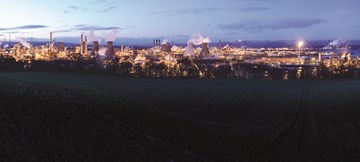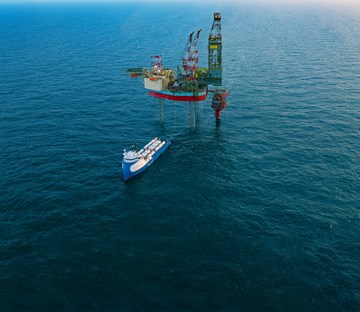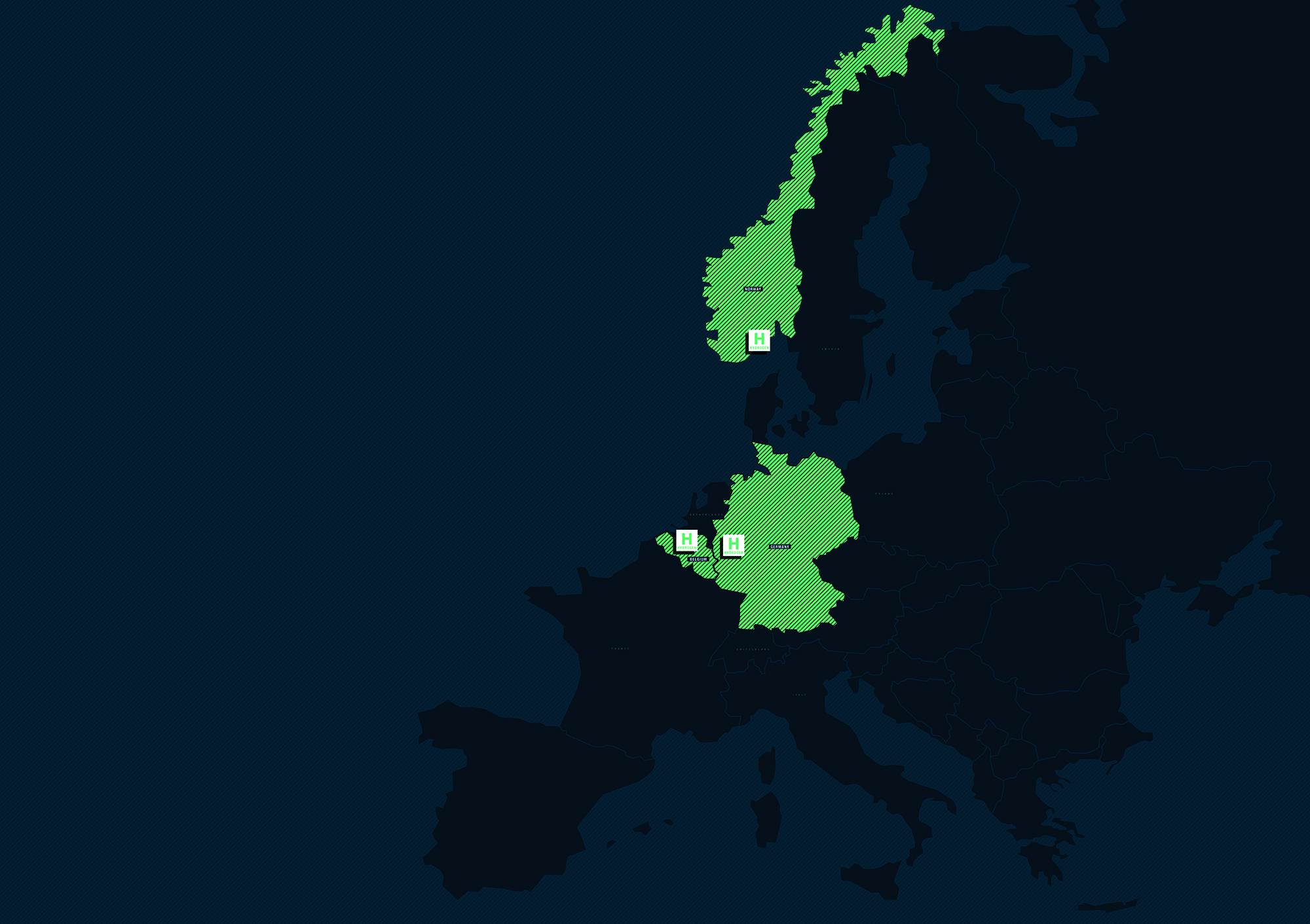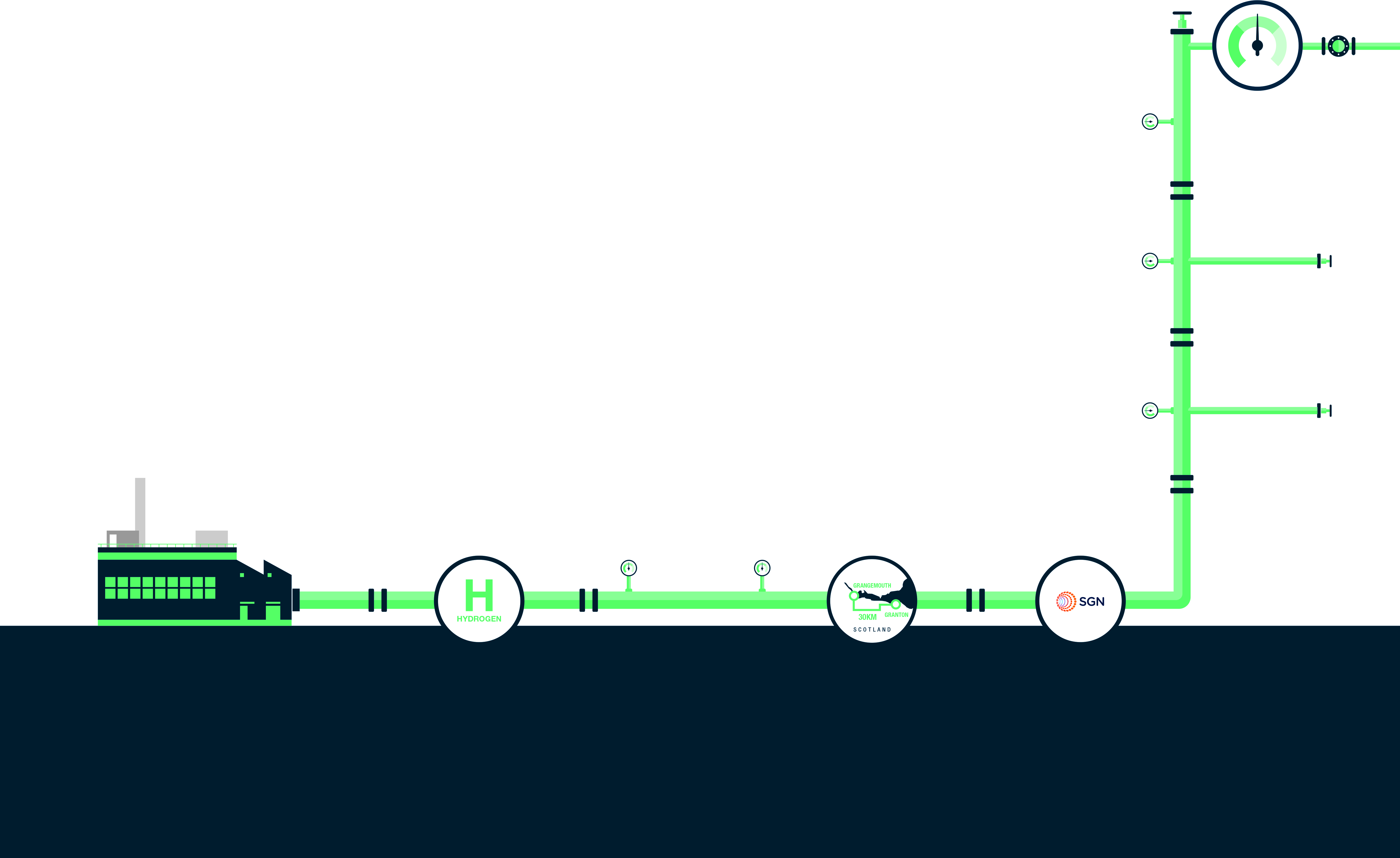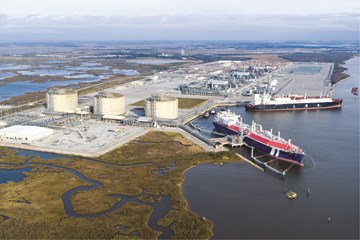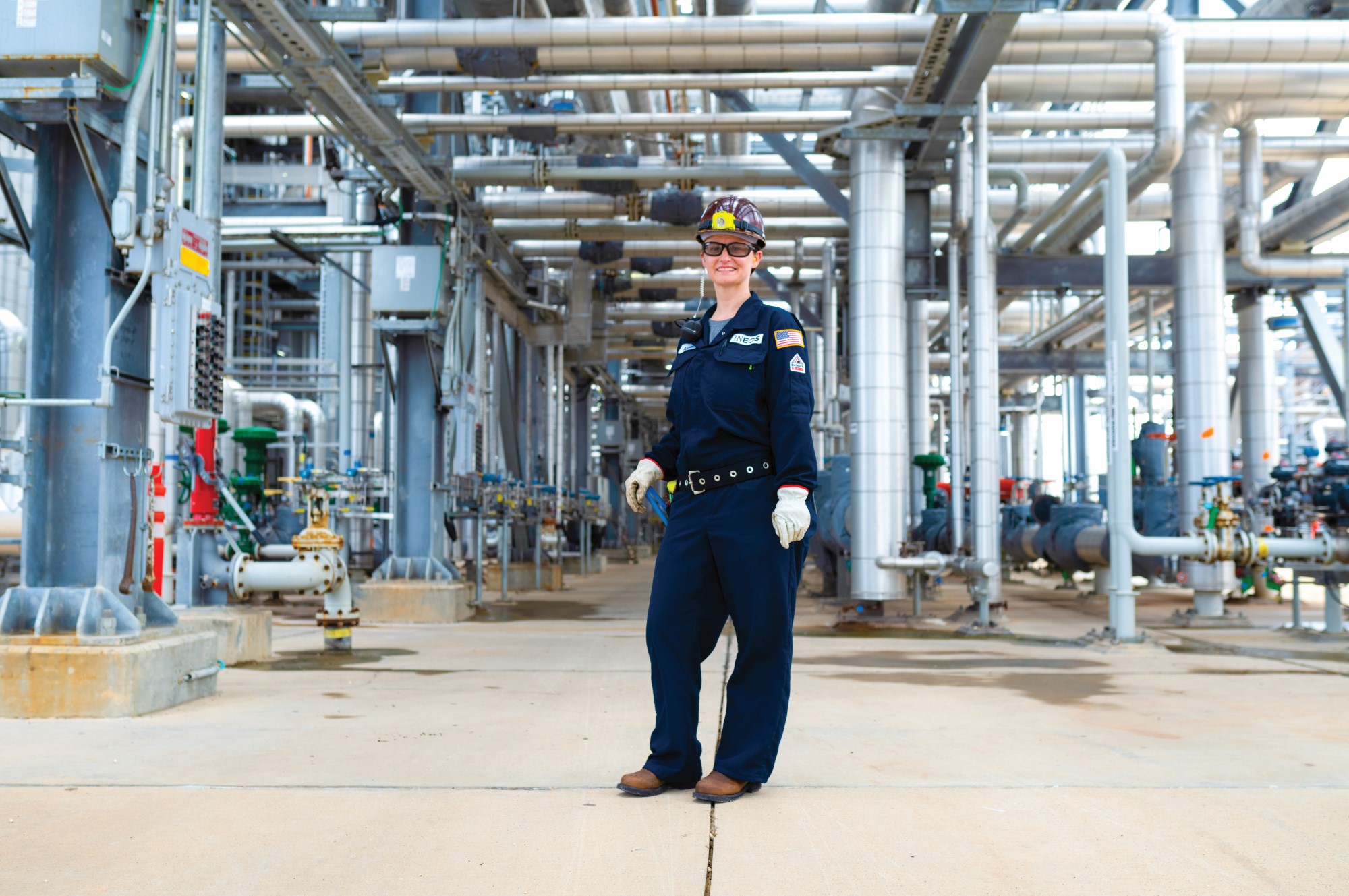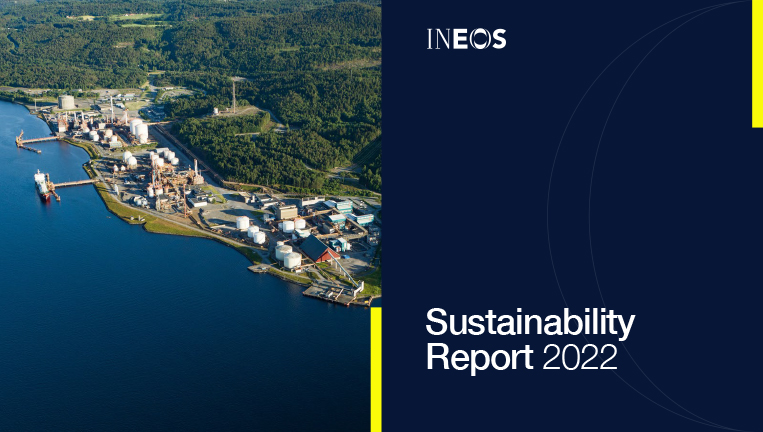THE chemical industry is traditionally dominated by men. But it is changing. And women, who have worked in the industry for decades, are testament to that. “When I first started out in the industry 30 years ago, things were happening that I thought were normal because I didn’t see anything else,” said Kathryn Shuler, Executive Director of the INEOS ICAN Foundation.
“But now that I look back, it was quite abnormal and it was not right the way women were treated.”
Today thanks to a focus on recruiting more women, the number of female chemical engineers in INEOS has never been higher.
“The chemical industry is still quite predominantly male, but it is changing in a really positive way,” said Sharon Todd, CEO of SCI (Society of Chemical Industry), a global innovation hub which helps to accelerate science out of the lab and into industry for society’s benefit.
“The industry just needs to change faster.”
INEOS is helping to close the gender gap, but realises there is still much work to be done.
Years ago, entering a world where few women had worked had its challenges.
Anja Hilden, who works at INEOS Köln in Germany, said she was often the only woman in her department when she became a chemical engineer about 30 years ago.
“It was challenging because I didn’t have any role models,” she said.
Women also faced further obstacles if they decided to start a family because there was an assumption that they would be the baby’s primary carer.
“It’s not just an issue that INEOS still has to tackle,” said Anne-Gret Iturriaga Abarzua, Head of Communications at INEOS Köln. “Society has to change as well.”
Quantaze Watts, Global Talent Director at INEOS Styrolution, believes the stereotypes are embedded in society.
“It goes back to when you are a kid, and you go to the store and ask for the Tonka truck and it’s mainly a boy’s toy, not a girl’s toy,” he said.
“We need to go to the little girls and let them know that they can do this, so that engineering jobs are not seen as men-only jobs.”
Prof. Dr. Petra Skiebe-Corrette, Director of NatLab, a non-formal science laboratory at the Freie Universität Berlin, believes the problem stems from the moment a child becomes aware of his or her gender.
“It is important that, before these gender stereotypes kick in, girls have STEM experience and know they can do it and enjoy it,” she said.
For more than 14 years INEOS has been involved in a programme in Germany, known as TuWas! The company believes that promoting science in schools is key to getting children – boys as well as girls - interested in STEM careers.
“Of all the companies supporting TuWas! – and I think there are more than 80 – INEOS is the one that supports the most schools,” said Petra.
Sharon, who graduated with a degree in chemistry from Southampton University in 1988, is also all in favour of a more diverse workforce.
“Our founders were creative, inventive and valued diversity,” she said. “They recognised the importance of diversity for innovation.”
She believes the industry has an image problem and does not sell itself to young people be they men or women.
“It needs to present itself as an opportunity to create change to enhance society through innovation, and as a place where, certainly foryoung scientists and engineers, they can put their skills to work and have a really valuable and rewarding career,” she said.
She described it as a massively important challenge.
“We need this flux of diversity,” she said. “We need diversity in our young people and in our middle and senior management.”
She said people from all different backgrounds could help to contribute to a new wave of scientific innovation to tackle the big societal challenges of climate change and global health.
“The industry has a vital role to play in delivering real societal benefit, not just profit,” she said, adding: “If we promoted the diversity of job opportunities, the breadth of experience that industry can offer and the direct ability to affect real change, I think we'd get a higher influx of women.”
WOMEN may have dominated the 1971 Grammy Awards, but elsewhere, opportunities were few and far between for American women – especially those seeking careers in traditonally male-dominated professions. Kathryn Shuler had grown up knowing – and feeling – that. Even her parents tried to dissuade her from pursuing a career in science. Technical jobs were for boys. Not girls.
To appease her parents, she opted to study business at university.
But the lure of science was too great, and she eventually switched to chemistry.
She also hoped that American society would change thanks to Title IX, a 1972 piece of landmark civil rights legislation that banned sex discrimination in schools and colleges.
“Before the introduction of Title IX, universities could refuse to allow girls to enrol in certain courses,” she said.
“Women could be summarily dismissed from engineering courses or stopped from pursuing science degrees. The prevailing thought was that they were only going to university to get a husband. And that they were only pursuing engineering or science courses to get a better husband.”
But despite the change in the law, old habits and attitudes remained.
“There wasn't a lot of encouragement for women who pursued engineering and science,” she said.
“If we were working in groups, some of my male classmates would not listen to my ideas and went so far as to meet without me.”
Kathryn was determined to complete her course, though, and finally graduated from the University of Pittsburgh in 1984with a degree in BS biochemistry.
She initially worked for a small Japanese-owned commercial analytical laboratory where she later discovered that men were paid $0.50 an hour more than women.
“It was the equivalent of a car payment back then,” she said.
A year later she was working as a lab technician at a nationwide metal company’s research facility, where she was responsible for a specialised piece of analytical equipment.
“I was very proud of the work I did,” she said.
The job required a specialised set of tools, which kept disappearing.
“A colleague told me that he had lent them to someone, but he could never remember who,” she said. “I got to the point where I couldn't do my job because I had no tools.”
Thankfully her understanding male boss replaced the tools – and offered her a safe place to store them.
At the time, Kathryn remembers feeling frustrated, but today she realises what her colleague was trying to achieve.
“It was just a very passive, aggressive way of saying, you shouldn't be here,” she said.
Despite the negativity that surrounded her, though, quitting was never an option.
“I saw other women leave because they weren’t prepared for some of the resistance,” said Kathryn. “But I never felt like giving it up because it was something I loved.”
She went on to co-author several patents and started working on a company-subsidised Master’s Degree despite being told she could never be promoted to a scientist even if she got her degree.
Finally, she decided to leave and secured a job as a chemist at a small analytical equipment manufacturer.
“It was 1989 and it was the first place I worked that considered me as an equal to my male counterparts,” she said.
Two years later she moved to Houston to become a chemist at Solvay.
At the time, it never occurred to her that her views and abilities were being challenged more than her male colleagues.
All she knew was that she would only be treated as an equal there if she could prove she was capable wof doing the job. Equality, however, didn’t always extend to the facilities.
“If you needed to use the bathroom, you had to leave where you were and go to the administration building to use the ladies’ room,” said Kathryn. “It was about a 10-minute walk.”
Thankfully, as more women started to join the company, management recognised the need for change, and some of the men’s rooms became women’s rooms.
“Not everyone was happy about that,” she said.
Kathryn later moved into the Tech Service & Product Development group.
“There was only one woman in the group apart from me,” she said.
Within a few years, though, she was managing the polypropylene TS&D group After BP acquired Solvay’s Houstonbased polypropylene assets in 2001, Kathryn was transferred to BP’s research centre near Chicago, only returning to Houston when INEOS bought most of BP’s chemical assets in 2005.
Today, she’s happy and fulfilled in her role at INEOS which has given her tremendous freedom over the years to make a difference.
“Over time, I've really seen a major change and a major shift,” she said. “I don't hear about some of the issues that we used to hear about. I don't think everything's solved, but I think that we've really come a long way.”
What’s particularly pleasing to Kathryn is seeing men and women engineers or plant operators working together.
“I see more of an equal footing than I've ever seen before,” she said.
But Kathryn believes what has really made the difference is INEOS’ commitment to diversity.
“Sometimes I think that's taken the wrong way,” she said. “Some see it as ticking a box but it goes deeper than that."
“When you hire people with different experiences, from different backgrounds, and who have different ways of looking at life, you have a bigger diversity of problem solvers.”
And that, she said, is where real power lies.
“You want that diversity of thought,” she said. “You need people who look and think differently. We should want diversity in the workplace because we are better for it.”
Her own team reflects that approach. She works alongside a former teacher, an exercise scientist, a graphic designer and a PR expert.
“None of them came from a corporate background but they're really phenomenal people with some really specialised skills,” she said.
Despite all the positive changes, Kathryn believes some things will only change when people recognise their own prejudices.
“We all have our way of looking at the world,” she said. “But we need to make sure we are not unfairly judging or limiting people based on our own prejudices. We need to look at people as individuals.
“There's still work to be done but I'm pleased that we've come a long way and I look forward to future generations making things even better.”
TODAY Stacy Putman is in charge of producing many of the leaders of tomorrow for INEOS’ businesses in the US.
The careers of more than 300 people are currently in her hands. “It’s the most amazing job I have ever had,” she said. “I am helping them to develop the skills to make them great leaders of the future.” She understands how important it is to help, guide and support employees, because it’s what was lacking when she set out on her own journey 40 years ago. Back then, the world she entered was really for men only.
“I had studied chemistry at school and really liked it,” she said. “It was like magic and cooking at the same time.”
But after securing a place at Texas Tech University to study chemical engineering, an advisor took her to one side.
Find a husband quickly and then you can transfer to an easier degree, or you can just quit, he told her.
“It was pretty disheartening because this was the early 80s, not the 1940s,” she said.
She did find a husband on the course, but she also decided to stay, graduated and joined the world of work.
But hers has not been an easy journey.
“The view was if you don’t like it, leave,” she said. “It was very much sink or swim. If you could swim, then you might get some neat opportunities or you might not. No one understood community or networking, other than the good old boy network.”
Stacy said she was always made to feel that she was ‘taking the place’ of a man by simply working.
“We accepted a lot of things and attitudes then that we certainly would not accept today,” she said.
A few years ago, she experienced a huge – and welcome – change. She was asked by INEOS O&P’s board of directors to lead a polypropylene facility in California. The job would mean moving 1,800 miles.
“I was thrilled and challenged to be given such an opportunity,” she said. “I told my manager that I had watched and learned from a lot of our other site directors.”
But that’s not what he wanted to hear. He didn’t want her to copy what men had done. He wanted her to forge her own path. To be herself.
“I was being asked to go and set the course for the future for that plant and do it the way I saw was needed,” she said. “Not follow what the guys had done.” She left for California.
“I had never experienced that before in my life,” she said. “I made my own decisions and led a team to make recommendations. It was the best job and best experience I had ever had in my entire career.”
Stacy praises INEOS’ senior leadership team.
“For some time now, they have understood the importance of a diverse workforce and diverse leadership,” she said. “And I think we've started to see the benefit of that in different locations and different roles.”
But she believes women are sometimes holding themselves back from these opportunities.
“Just because you have never seen a woman in a role at INEOS doesn’t mean that you shouldn’t apply for it,” she said.
“I’ve always replaced a man in every role I’ve ever had in my career. Women, and really everyone, should not hold themselves back because they don’t look like the person in the job.”
“So could a woman be a maintenance manager? Could a woman be a business director? Could a woman be a fire chief? That's happening all over our industry today. Until we see it repeated, society will continue to question whether or not some of these roles are really the right roles for women. Let’s keep this going so we can repeat, repeat, repeat.”
WOMEN were still in the minority when Cassie Bradley signed up to study chemical engineering at the University of Illinois at Urbana-Champaign in 2012. Family and friends were supportive of her choice, but others often seemed surprised. “The surprised reaction wasn’t unusual,” said Cassie. “And looking back, it did have a negative effect because it reinforced the feeling that I was out of place or didn’t belong there.”
But since 2015, she has been working for INEOS and has had a very positive experience.
“INEOS is a good place for women to work,” she said.
But she believes the company could make it even better by engaging with the women’s groups that now exist within the company.
“INEOS could learn from these women’s experiences, identify the reasons why so few women are in senior executive roles and, more importantly, work out how to close the gap,” she said.
Cassie, who initially worked as a production engineer at the company’s Channahon polystyrene plant, launched Lean Into Success, women’s networking group at INEOS Styrolution.
It is one of several groups that now exist within the INEOS group.
“It is important for women to be part of organisations like this so they can learn from each other and find mentors,” she said.
“Although we may ultimately realise we are a minority, we can build a community of belonging within the organisation.”
One reason why Cassie believes very few women become senior executives is due to visibility. Or lack of it.
“Women don't see other women in those roles, so they don't view themselves in those roles, and therefore don't aspire,” she said.
She felt women could help support each other by learning how to ‘lean in’ and push outside their comfort zones to demonstrate they had the skills to become a leader.
“Women are often not given the benefit of the doubt and have to perform at a higher level early on in order to be considered as a future leader,” she said.
But Cassie, who is the sustainability commercial manager at INEOS Styrolution, remains optimistic about the future for INEOS. And for women in INEOS too.
“Traditionally there has been a difference in expectations between men and women in the home as well as the workplace,” she said. “A lot of times women have a full-time second job at home as well as what they're doing at work which strains both their physical and mental energies.
“But that’s changing. Men want a good work life balance too. We all want to be successful both at work and at home.”
“I was being asked to go and set the course for the future for that plant and do it the way I saw was needed. Not follow what the guys had done.”
FRAN Millar freely admits that she was once loud, pushy and aggressive at work. She saw it as the best way to operate in male-dominated environments.
“I just used to go at it,” she said. “But I was like a bull in a china shop and I would leave a trail of destruction behind me.”
Today she is CEO of INEOS Belstaff and credits those who helped her early on in her career to refine her leadership skills.
“They sort of course corrected me,” she said. “I was lucky. They showed me how to refine how I operated and refine how I dealt with people without compromising who I am and my own principles.”
Fran had left school at 18 because she didn’t want to go to university. She initially worked as a PA to Anthony Boucher and Peter Worth,businessmen with a track record of event management and representing athletes including Björn Borg.
When Fran’s brother, David, took the yellow jersey on stage one of his debut Tour de France, Anthony suggested she should considermanaging him.
“He thought I was a pretty awful PA but felt I had the attitude needed to manage talent,” she said.
She went on to set up her own talent and event management agency, FACE Partnership.
Within two years she was representing most of the major cycling talent in the UK, including her brother, Mark Cavendish and Geraint Thomas.
In mid-2003 she came up with a concept for a major track cycling event that would showcase the very best of international track talent in the UK’s only international standard velodrome in a Saturday night format that involved live music and track centre entertainment.
“Everyone told us it wouldn’t work, but in the end they had to delay the start because the queues were so big that they couldn’t get everyone into the venue,” she said.
Revolution went on to become the most successful track cycling event in the UK at a time when British Cycling was achieving unprecedented success – with the track team consistently dominating international competition.
The hugely successful national programme was producing talent in all disciplines of the sport under the leadership of Dave Brailsford.
In 2007 the Tour de France started in London, with five British riders in five different teams and the seed was planted that the time had come to build a British team.
Dave approached Fran to help with the project and, over the next 18 months, Team Sky took shape.
Fran, who supported Dave in the project management whilst he focused on the Beijing Olympics, was fundamental in helping to build and project manage the team’s creation.
“We were working 24 hours a day, seven days a week and doing everything we could to make it successful,” she said.
In the 10 years of Team Sky they won six Tours, with four different riders.
When Sky ended their involvement in cycling, INEOS and Sir Jim Ratcliffe stepped in to take over the team, which became Team INEOS in May 2019.
As part of the INEOS ownership Dave and Fran were asked to support in the concept, management and delivery of the INEOS 1:59 Challenge.
“We were being asked to do something that nobody had ever been able to do before,” she said. “It was such a massive undertaking. But it would not have happened if it had not been for INEOS and Jim.”
It is that INEOS spirit – and that belief that anything is possible – that Fran admires greatly.
“I believe in what the business stands for, its values, how it operates, and how it treats people,” she said.
Not long after Eliud Kipchoge’s historic run in Vienna, Fran was offered another challenge – as CEO for INEOS’ fashion business Belstaff.
Her whole life changed in five days as she left her life in Manchester to begin a new role in London.
Looking back, despite her own personal success story, she knows that many women, women of colour and people with disabilities have struggled with the uneven playing field.
“I have had nothing but backing since I joined INEOS,” she said. “INEOS doesn’t care whether I am male or female.” But she is aware of the need to help where she can.
“We have a diversity panel on Belstaff, and levelling the playing field is important when you are in a position of leadership,” she said.
“But getting enough women into businesses, getting enough people of colour into businesses, getting enough diversity into businesses, starts way furtherdown the pipeline than people realise.
“It's like sport. You don't have any talent in sport if you don't start at development level and build them through the talent pathway.”
ANUPRIYA Gupta comes from a family of chemical engineers. Her father was one, so too was her grandfather. So both were supportive when she decided she too wanted to become a chemical engineer.
For the past three years she has worked at INEOS O&P at Chocolate Bayou in Texas. It’s an environment dominated by men.
“Frequently being the only woman in the room, I always wondered what to do,” she said. “I was hesitant to speak out in case my ideas got passed up because I had a unique perspective.
“But I also thought that the only way to find out the answer would be to jump straight in.”
And that’s what she did, starting with asking colleagues very early on to learn how to pronounce her name, rather than giving her a nickname.
“My name is my identity,” she said. “It’s who I am. If you change my name, you change my identity.”
As a process engineer, she is responsible for the day-to-day performance of the plant to ensure it runs smoothly and efficiently.
“Occasionally I have been on the receiving end of some strange looks,” she said. “But having that pushback to some of my ideas has just made me a stronger engineer.”
Over the past few years, she has witnessed and welcomed change and changing attitudes within INEOS.
“I can see the transition happening,” she said. “INEOS is definitely moving in the right direction in terms of diversity in the workplace.”
Anupriya said a diverse workforce was important.
“We need people looking at the same problem from a different perspective,” she said. “If we don’t, if we are all looking at it from the same place, how are we going to be trailblazers in our industry?”
She said she was encouraged when she attended a recent career fair with a team of engineers from INEOS. “We did a good job of setting the standard because we were a team of mainly women,” she said.
EVIDENCE has shown that for a woman to succeed in a male-dominated industry, confidence matters as much as competence.
Gabriela de Gouveia, who joined INEOS Styrolution in Switzerland in May 2022, believes that to be true. “In my career, there have been times when I have faced prejudice outside the company,” she said. “But I have found it is important to manage those situations confidently.” The problem is that women are sometimes less self-assured than men.
Gabriela is a commercial product manager whose job involves managing the supply and demand of a range of plastic products.
In addition to deciding the price and analysing the market, she is the intermediate between the sales and supply chain teams.
She says it is sometimes challenging to work in an industry dominated by men, but is full of praise for INEOS’ approach to women in the workplace.
“Women are generally well received and encouraged to improve and grow,” she said.
Her hope, though, is that more women seek jobs in the chemical industry.
“If more women join the field and break stereotypes, there will be a greater acceptance of women in the industry,” she said.
“It is sometimes challenging to work in an industry dominated by men, but is full of praise for INEOS’ approach to women in the workplace.”AN ORGANISATION, which was founded by Facebook’s former chief operating officer to empower women at work, continues to spread its wings. More and more women around the world are now setting up their own Lean In Circles so they can share their struggles, get and give advice and celebrate their achievements.
“Just hearing how somebody else went through a battle can be so encouraging and spark new ideas for you,” said Cassie Bradley, a sustainability commercial manager who set up a Lean In Circle for her female colleagues at INEOS Styrolution in Illinois in America. The small group of women now meet regularly.
“Lean In Circles are all about peer mentoring,” she said. “We share experiences and ideas, and give feedback when we succeed and when we fail.”
Lean In was founded by Sheryl Sandberg, a Harvard-educated mother of five who stepped down as Facebook’s chief operating officer last year to focus on her philanthropic work.
In 2010, she gave a TED talk in which she called on women to believe in themselves and their own success.
“Women systematically underestimate their own abilities,” she said. “Men will attribute their success to themselves. Women will attribute it to other external factors. If women do a good job, they will say someone helped them, they got lucky and worked really hard.”
INEOS Köln in Germany has also recently introduced a Lean In Circle.
“I really hope this will help my female colleagues to develop their communication and leadership skills and stand up for their needs,” said Anja Hilden, who has worked for the chemical industry for more than 30 years.
“I was very often the only woman in the department which was challenging because you didn’t have role models, so you had to invent yourself.”
LISA Wiedenhaus has no qualms about working in a male-dominated industry because, at INEOS Köln in Germany, the fact she is a woman is irrelevant. Everyone, she says, is treated equally.
“Sometimes I realise that I am the only woman in a meeting, but nobody makes me feel as if I am,” she said. “It makes no difference to them. We all get the same chances, are appreciated and taken seriously.”
Lisa officially joined INEOS in October 2016 after graduating from the European University of Applied Sciences in Brühl, Germany.
But by then, she had actually been working for the company for three years as part of a dual-study programme after finishing school at 19.
“The programme allowed me to study and work at the same time,” she said.
Today, she is an energy business controller, with responsibility for reviewing the monthly results of the Köln energy business, and providing business analysisto the Energy Commercial Manager to enable him to deliver business targets.
She also produces management reports that are used to make economic decisions.
It is a job she loves. “I cannot think of any aspect or situation in which being a woman would be disadvantageous,” she said.
“Even after maternity leave, most women come back to either the same job, or at least a very, very similar job which makes it easy to return to work.”
Although she feels confident and supported at work, she values the opportunity to meet other women working in INEOS.
“It is always good to share experiences and listen to each other’s problems, but it is equally important to hear about each other’s successes,” she said.
AN ORGANISATION, which was founded by Facebook’s former chief operating officer to empower women at work, continues to spread its wings. More and more women around the world are now setting up their own Lean In Circles so they can share their struggles, get and give advice and celebrate their achievements.
“Just hearing how somebody else went through a battle can be so encouraging and spark new ideas for you,” said Cassie Bradley, a sustainability commercial manager who set up a Lean In Circle for her female colleagues at INEOS Styrolution in Illinois in America. The small group of women now meet regularly.
“Lean In Circles are all about peer mentoring,” she said. “We share experiences and ideas, and give feedback when we succeed and when we fail.”
Lean In was founded by Sheryl Sandberg, a Harvard-educated mother of five who stepped down as Facebook’s chief operating officer last year to focus on her philanthropic work.
In 2010, she gave a TED talk in which she called on women to believe in themselves and their own success.
“Women systematically underestimate their own abilities,” she said. “Men will attribute their success to themselves. Women will attribute it to other external factors. If women do a good job, they will say someone helped them, they got lucky and worked really hard.”
INEOS Köln in Germany has also recently introduced a Lean In Circle.
“I really hope this will help my female colleagues to develop their communication and leadership skills and stand up for their needs,” said Anja Hilden, who has worked for the chemical industry for more than 30 years.
“I was very often the only woman in the department which was challenging because you didn’t have role models, so you had to invent yourself.”
